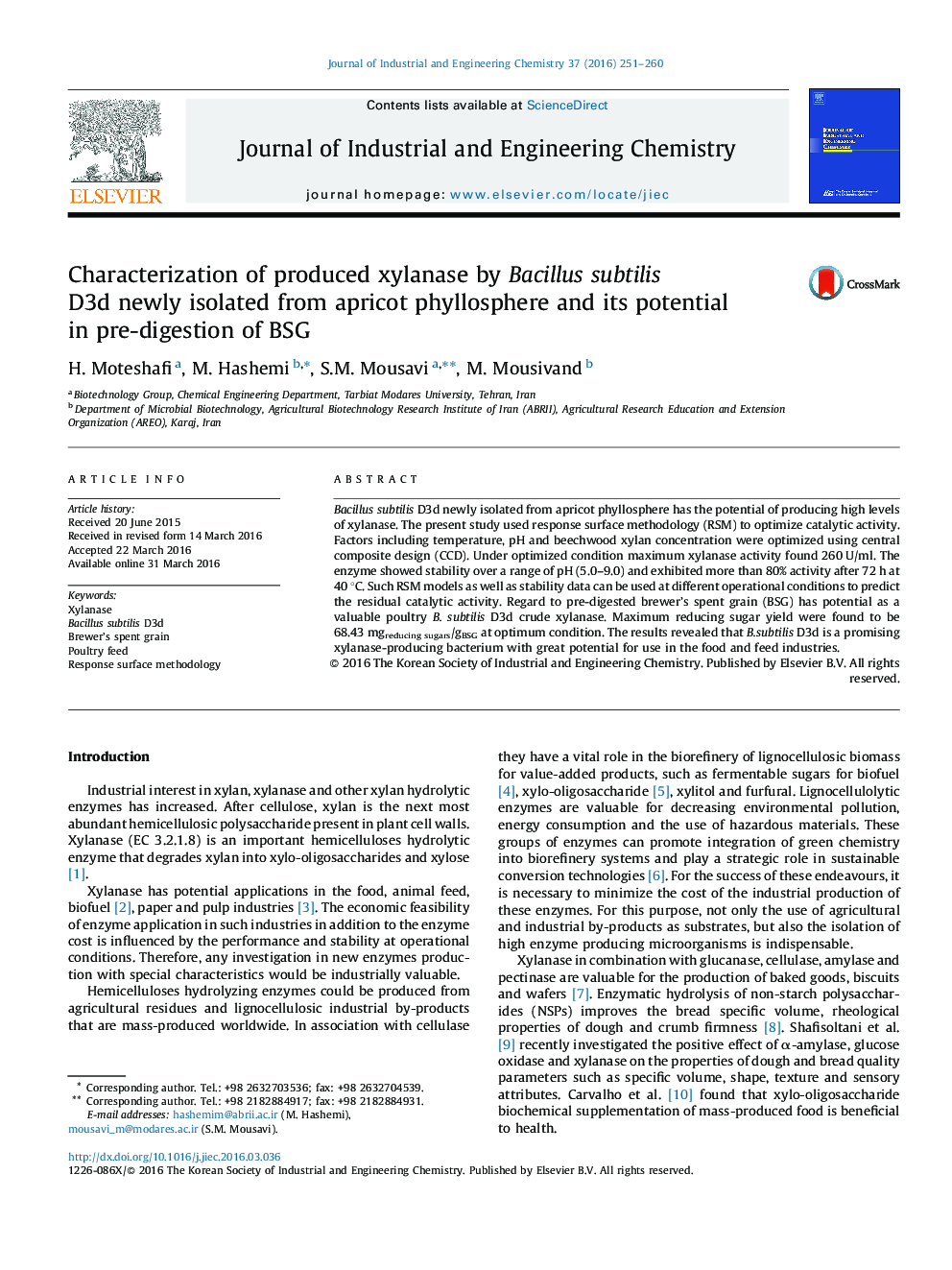| کد مقاله | کد نشریه | سال انتشار | مقاله انگلیسی | نسخه تمام متن |
|---|---|---|---|---|
| 227291 | 464820 | 2016 | 10 صفحه PDF | دانلود رایگان |

Bacillus subtilis D3d newly isolated from apricot phyllosphere has the potential of producing high levels of xylanase. The present study used response surface methodology (RSM) to optimize catalytic activity. Factors including temperature, pH and beechwood xylan concentration were optimized using central composite design (CCD). Under optimized condition maximum xylanase activity found 260 U/ml. The enzyme showed stability over a range of pH (5.0–9.0) and exhibited more than 80% activity after 72 h at 40 °C. Such RSM models as well as stability data can be used at different operational conditions to predict the residual catalytic activity. Regard to pre-digested brewer's spent grain (BSG) has potential as a valuable poultry B. subtilis D3d crude xylanase. Maximum reducing sugar yield were found to be 68.43 mgreducingsugars/gBSG at optimum condition. The results revealed that B.subtilis D3d is a promising xylanase-producing bacterium with great potential for use in the food and feed industries.
Figure optionsDownload as PowerPoint slide
Journal: Journal of Industrial and Engineering Chemistry - Volume 37, 25 May 2016, Pages 251–260